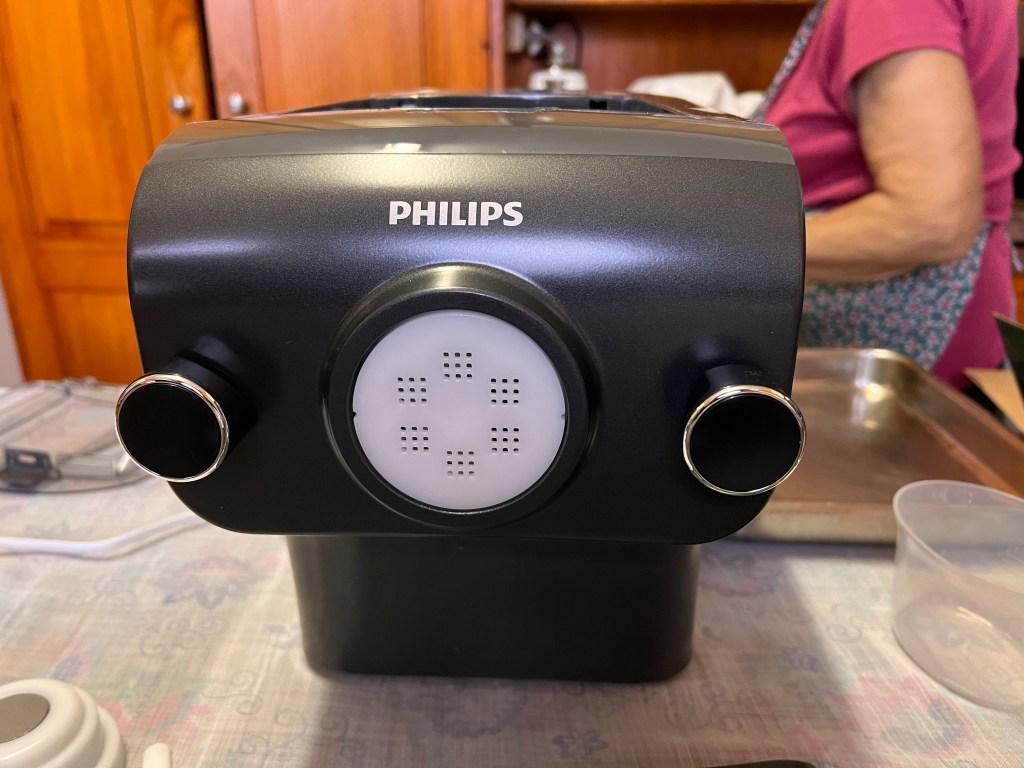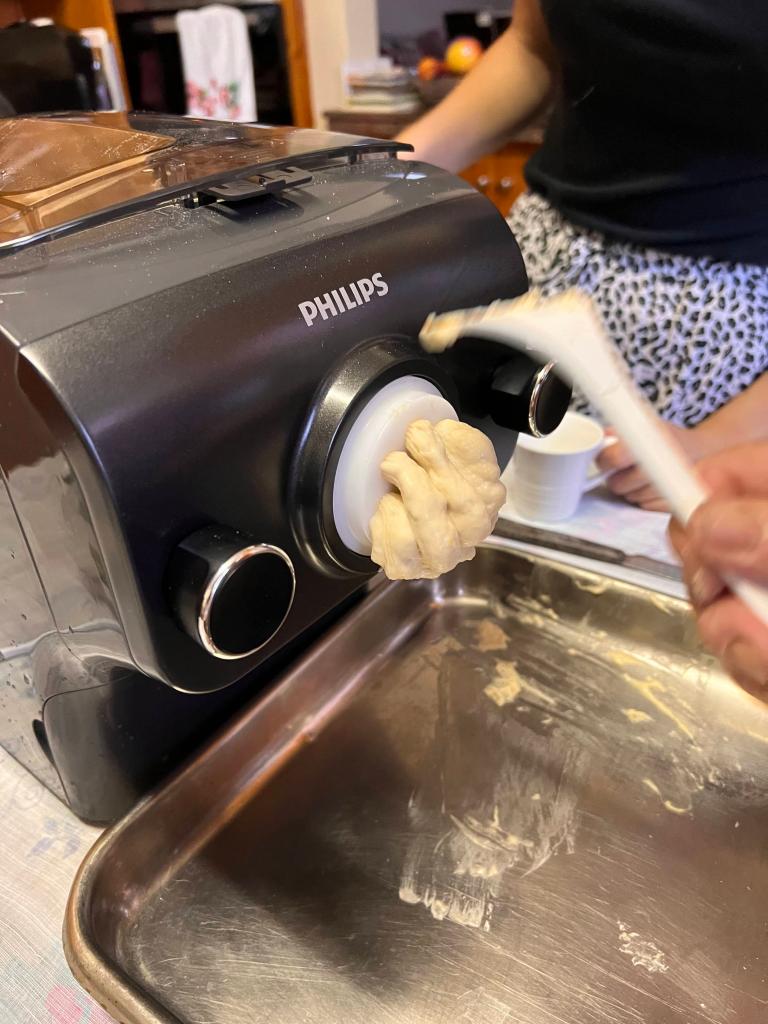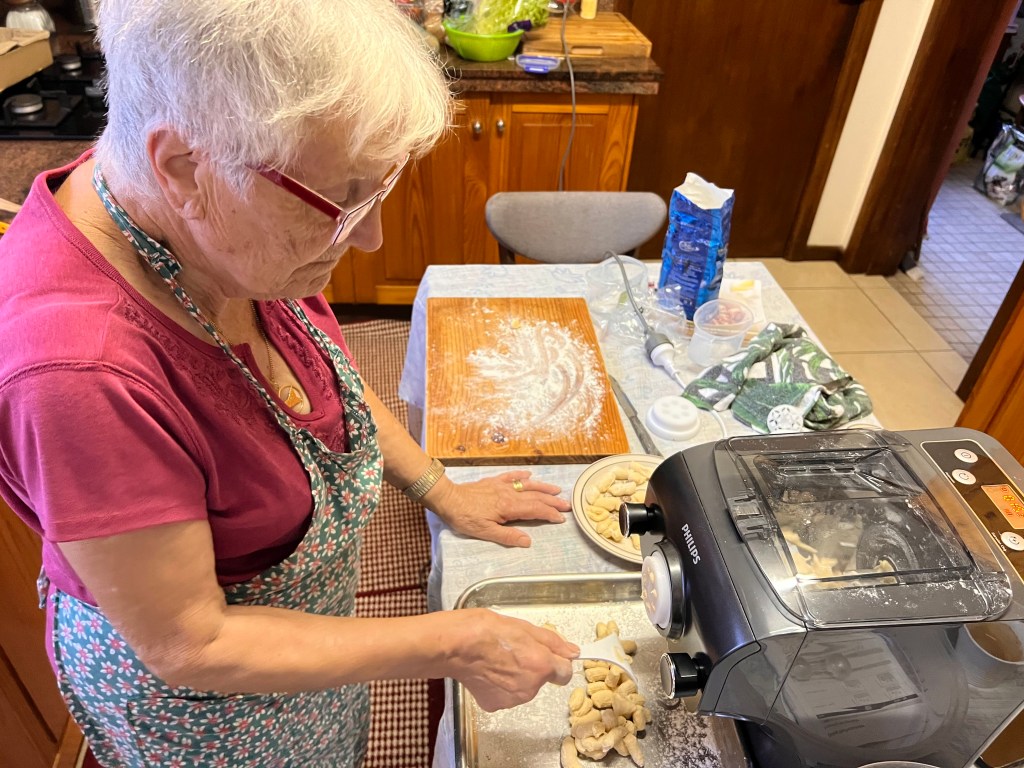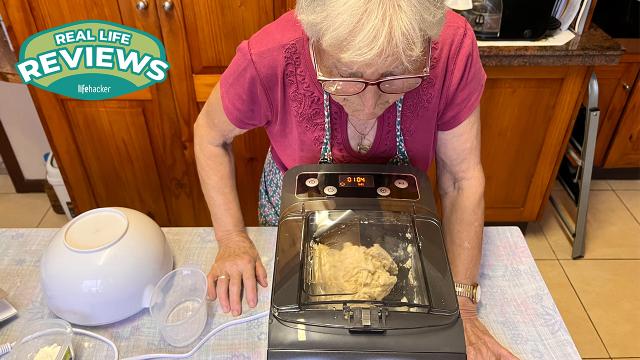Pasta-making is a soulful experience. It’s a tradition that many families, like mine, pass down from generation to generation. To me, making pasta from scratch does more than feed your belly, it’s a reminder of connection to family; to culture. But when you’re kneading out a batch of hand-made pasta at home, you are limited in your options. Sure, tagliatelle or pasta maltagliati are delicious, but how cool would it be to make penne yourself? That’s where the Philips Pasta Maker and Noodle Maker steps in.
The fully-automatic pasta maker offers a pretty sweet deal: it boasts homemade pasta in under 10 minutes, without the manual labour of kneading dough or cutting pasta shapes. With four different shaping discs, the Philips Pasta Maker and Noodle Maker gives folks the option to make spaghetti, penne, fettuccine or lasagna at home and it comes with a recipe book so you have some guidance on what to do once your fresh pasta is ready.
So, when I was offered an opportunity to review the automatic pasta maker, I knew exactly what I needed to do. I had to take this baby to my nonna’s house and get a real expert’s opinion. Here’s how the experience went.
Philips Pasta Maker Review
What’s good about the Philips Pasta Maker?

First thing’s first. It looks pretty slick. My nonna (her name is Natalina) was very excited when we opened the box and found this – reasonably large – shiny machine inside.
“It looks good; it would cost a bit of money,” she said when she first saw it.
And she’s not wrong, the price is usually set at about $359ish – though it’s currently 25 per cent off on Amazon ($299 down from $399).
The initial set-up of the pasta maker is relatively painless, if a little clunky, and it’s all prepped for production in a few minutes.
In the box, alongside the pasta maker itself, you’ll find the shaping discs, a measuring cup and tools for cutting your pasta noodles free from the machine easily. I like that you have the option of a few different pasta varieties, and options like penne are particularly interesting because they’re not easy to produce by hand.
But it’s about here that things became a little confusing.
What’s not so good?

Listen, I really wanted to love this thing. And I do want to be clear that there appear to be a whole lot of people in the Amazon reviews section who do love it. But I just found the actual pasta-making process unnecessarily complicated when using the machine.
When you use the pasta maker it asks you to pour in one or two cups of flour, followed by liquid, and then it asks you to press the start button which will automatically mix and extrude the pasta.
The liquid element is one egg and water mixed to make one cup – which felt kind of weird to me, I don’t quite know why. Once we added it all in and began the process, the dough looked too dry to us – remember we’re used to doing this by hand – so we added some more water. This was an error.
The pasta began slowly squeezing out of the machine and it was gooey, shapeless chunks of wet dough.
“Porca miseria, what are you doing?” was my nonna’s reaction.
Philips Kitchen Chef and Ambassador, Elle Vernon later explained to me that “It will look dry and not like a usual silky pasta dough that you make from scratch, but please don’t be tempted to add any more liquid”.
I tried again a second time with my mum and took Vernon’s advice. Now, maybe I’m just not able to follow simple instructions, but the second time around, the pasta just didn’t come out at all. It got caught up in the machine and liquid began leaking out the front attachment. Mum wasn’t a fan.
Genuinely, I think there may have been some difficulty on our end when it came to adjusting to the automatic practice of making pasta. But in the end, we balled up the unimpressive fruits of the machine’s labour and started again by hand.
The other element I found frustrating was the cleanup. Taking apart the entire machine and washing it all took too long and filled the drying rack with a pile of little pieces – the discs were especially annoying to clean.
On the other hand, using a manual pasta maker means you mix wet ingredients by hand and the machine only comes into contact with finished dough and flour – you can wipe it down quite easily.
The verdict: Philips Pasta Maker

For many people, the concept of an automatic pasta maker that can pump out more types of pasta than manual machines can is a very exciting one. And, as I mentioned earlier, there are a lot of customers who are very pleased with their experience with the Philips Pasta Maker and Noodle Maker.
But for me, it introduced complications to a relatively simple task and removed the almost mindful element of making something by hand in your home. And as for nonna Natalina, she swears by her 50+-year-old manual machine – and I can’t say I disagree with her.

Leave a Reply
You must be logged in to post a comment.